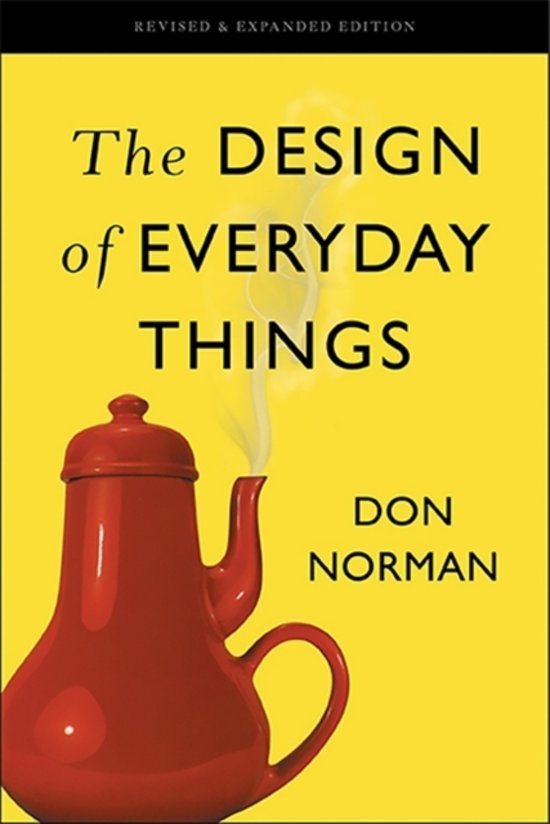Discvr
menu zoek
The Design of Everyday Things
Even the smartest among us can feel inept as we fail to figure out which light switch or oven burner to turn on, or whether to push, pull, or slide a door. The fault, argues this ingenious-even liberating-book, lies not in ourselves, but in product design that ignores the needs of users and the principles of cognitive psychology. The problems range from ambiguous and hidden controls to arbitrary relationships between controls and functions, coupled with a lack of feedback or other assistance and unreasonable demands on memorization. The Design of Everyday Things shows that good, usable design is possible. The rules are simple: make things visible, exploit natural relationships that couple function and control, and make intelligent use of constraints. The goal: guide the user effortlessly to the right action on the right control at the right time. In this entertaining and insightful analysis, cognitive scientist Donald A. Norman hails excellence of design as the most important key to regaining the competitive edge in influencing consumer behavior. Now fully expanded and updated, with a new introduction by the author, The Design of Everyday Things is a powerful primer on how-and why-some products satisfy customers while others only frustrate them. Onderstaande tekst is vertaald vanuit de originele taal Zelfs de slimsten onder ons kunnen zich onbekwaam voelen als we even niet kunnen uitvogelen welk lichtknopje of gaspitje we aan moeten zetten, of of we moeten duwen, trekken of schuiven. Volgens dit ingenieuze en zelfs bevrijdende boek, ligt de fout niet bij onszelf, maar bij het ontwerp van het product dat de behoefte van de gebruiker en de principes van de cognitieve psychologie negeert. De problemen reiken van ambigue en verborgen besturingselementen tot willekeurige relaties tussen besturingselementen en functies, gecombineerd met een gebrek aan feedback of andere hulp en onredelijke eisen voor het geheugen. The Design of Everyday Things laat zien dat goede, bruikbare ontwerpen mogelijk zijn. De regels zijn simpel: maak dingen zichtbaar, gebruik natuurlijke relaties tussen functie en besturing, en maak slim gebruik van de beperkingen. Het doel: de gebruiker moeiteloos leiden naar de juiste actie voor de juiste handeling op het juiste moment. In deze vermakelijke en inzichtelijke analyse prijst de cognitief wetenschapper Donald A. Norman excellentie van ontwerp als de meest belangrijke sleutel voor het behalen van een concurrerende positie in het beïnvloeden van klantengedrag. The Design of Everyday Things, nu volledig uitgebreid en herzien en met een nieuwe introductie van de auteur, is een krachtige start voor hoe en waarom klanten gelukkig worden van sommige producten en gefrustreerd van andere.